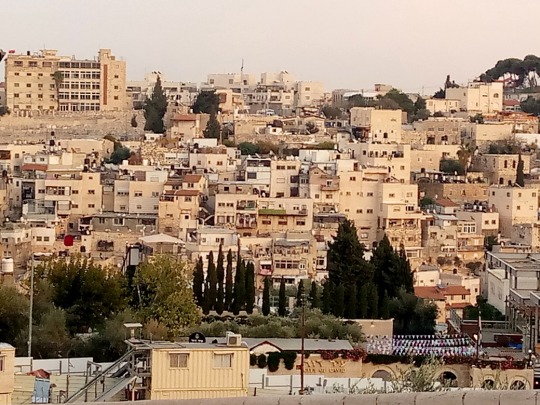#Real estate development
Text

Disaster capitalism has taken many forms in different contexts. In New Orleans after Hurricane Katrina in 2005, there was an immediate move to replace public schools with charter schools, and to bulldoze public housing projects to make way for gentrifying townhouses. In Puerto Rico after Hurricane Maria in 2017, the public schools were once again under siege, and there was a push to privatize the electricity grid before the storm had made landfall. In Thailand and Sri Lanka after the 2004 tsunami, valuable beachfront land, previously stewarded by small-scale fishers and farmers, was seized by real estate developers while their rightful occupants were stuck in evacuation camps.
It’s always a little different, which is why some Native Hawaiians have taken to calling their unique version by a slightly different term: plantation disaster capitalism. It’s a name that speaks to contemporary forms of neocolonialism and climate profiteering, like the real estate agents who have been cold-calling Lahaina residents who have lost everything to the fire and prodding them to sell their ancestral lands rather than wait for compensation. But it also places these moves inside the long and ongoing history of settler colonial resource theft and trickery, making clear that while disaster capitalism might have some modern disguises, it’s a very old tactic. A tactic that Native Hawaiians have a great deal of experience resisting.
#maui wildfires#hawaiʻi#water use#capitalism#real estate development#profiteering#disaster capitalism#colonialism#natural resources
122 notes
·
View notes
Text

sociopathic
real estate firm Harey Zahav posted this on their insta:
'A House on the Beach is Not a Dream' [autotranslate]
#genocide#palestine#free palestine#israel#gaza#real estate development#capitalism#right wing#colonization#apartheid#genocide joe#2023
11 notes
·
View notes
Text
The Peebles Corporation
Website: https://peeblescorp.com/
Address: 1691 Michigan Avenue, Miami Beach, FL 33139
The Peebles Corporation is one of the largest hotel developers and land development companies. With a portfolio of over 10 million square feet and $8 billion in active and completed projects across major cities, their success through public and private partnerships is unmatched. As one of the largest multifamily developers, they prioritize construction excellence, sustainability, historic preservation, and innovative design for transformative outcomes. Recognized as one of the most acclaimed black-owned property management companies, The Peebles Corporation has become one of the largest multifamily developers in the US.
#Real Estate Development#hotel developers#hotel development#land development companies#property developer
LinkedIn: https://www.linkedin.com/company/the-peebles-corporation

#Real Estate Development#hotel developers#hotel development#land development companies#property developer
2 notes
·
View notes
Text
The Peebles Corporation
Website: https://peeblescorp.com/
Address: 1691 Michigan Avenue, Miami Beach, FL 33139
The Peebles Corporation is one of the largest hotel developers and land development companies. With a portfolio of over 10 million square feet and $8 billion in active and completed projects across major cities, their success through public and private partnerships is unmatched. As one of the largest multifamily developers, they prioritize construction excellence, sustainability, historic preservation, and innovative design for transformative outcomes. Recognized as one of the most acclaimed black-owned property management companies, The Peebles Corporation has become one of the largest multifamily developers in the US.
#Real Estate Development#hotel developers#hotel development#land development companies#property developer#commercial property development
LinkedIn: https://www.linkedin.com/company/the-peebles-corporation

#Real Estate Development#hotel developers#hotel development#land development companies#property developer#commercial property development
2 notes
·
View notes
Link
Excerpt from this story from Grist:
A century ago, the coast of southwest Florida was a maze of swamps and shoals, prone to frequent flooding and almost impossible to navigate by boat. These days, the region is home to more than 2 million people, and over the past decade it has ranked as one of the fastest-growing parts of the country. Many of those new homes sit mere feet from the ocean, surrounded by canals that flow to the Gulf of Mexico.
When Hurricane Ian struck the region on Wednesday, its 150-mile-per-hour winds and extreme storm surge smashed hundreds of buildings to bits, flooded houses, and tossed around boats and mobile homes. Cities including Fort Myers and Port Charlotte were destroyed in a matter of hours.
These vulnerable cities only exist thanks to the audacious maneuvers of real estate developers, who manipulated coastal and riverine ecosystems to create valuable land over the course of the 20th century. These attempts to tame the forces of nature by tearing out mangroves and draining swamps had disastrous environmental consequences, but they also allowed for the construction of tens of thousands of homes, right in the water’s path.
“What this is basically showing us is that developers, if there’s money to be made, they will develop it,” said Stephen Strader, an associate professor at Villanova University who studies the societal forces behind disasters. “You have a natural wetland marsh … the primary function of those regions is to protect the inland areas from things like storm surge. You’re building on top of it, you’re replacing it with subdivisions and homes. What do we expect to see?”
The root of southwest Florida’s vulnerability is a development technique called dredge-and-fill: Developers dug up land from the bottom of rivers and swamps, then piled it up until it rose out of the water, creating solid artificial land where there had once been only damp mud.
This kind of dredging began well before Florida’s postwar real estate boom, when the state’s agriculture and phosphate mining industries wanted to control inland flooding, create navigable pathways for boats, and cut paths for rainwater to flow into the Gulf of Mexico. As a result of these efforts, the flow of water to the coasts from Florida’s soggy inland became tame and predictable, and the channels gave boats direct access to the Gulf of Mexico. Developers began to see the southwest coast as a perfect place for retirees and soldiers returning from World War II to settle down — they just had to build houses for them first. They carved existing swamps into a dense network of so-called finger canals, then used the extra dirt to elevate the remaining land, letting the water in.
42 notes
·
View notes
Text
The Peebles Corporation
Website: https://peeblescorp.com/
Address: 1691 Michigan Avenue, Miami Beach, FL 33139
The Peebles Corporation is one of the largest multifamily developers with offices in New York City, Miami, and Washington D.C. With a portfolio of over 10 million square feet and $8 billion in active and completed projects across major cities, their success through public and private partnerships is unmatched. As one of the largest multifamily developers, they prioritize construction excellence, sustainability, historic preservation, and innovative design for transformative outcomes. Recognized as one of the most acclaimed black-owned property management companies, The Peebles Corporation has become one of the largest multifamily developers in the US.
#Real Estate Development#commercial property development#commercial real estate developers#commercial real estate development
LinkedIn: https://www.linkedin.com/company/the-peebles-corporation

#Real Estate Development#commercial property development#commercial real estate developers#commercial real estate development
2 notes
·
View notes
Text
Property Developers and Builders in Kolhapur

Kolhapur, a city in Maharashtra, India, is seeing a rise in both property developers and builders. Property developers are those who plan, design, and coordinate the construction of buildings and other structures, while builders are responsible for the actual construction work.
Avishkar Infra is a well-known property developer in Kolhapur. These companies have a strong reputation for delivering high-quality residential and commercial projects in the city. They have expertise in developing affordable housing projects as well as luxury apartments, villas, and commercial complexes.
One of the factors driving the growth of property developers and builders in Kolhapur is the increasing demand for real estate. With the city's growing population and expanding economy, there is a need for more housing and commercial spaces. Additionally, the government's initiatives to promote affordable housing have also created opportunities for property developers and builders to cater to a wider range of customers.
However, there are also challenges that property developers and builders face in Kolhapur. One of them is the availability of land for construction. With limited land availability in the city, developers and builders must find creative ways to optimize the use of available land.
In conclusion, property developers and builders in Kolhapur play a vital role in the city's real estate sector. They are responsible for developing and constructing high-quality residential and commercial projects to meet the growing demand in the city. While they face some challenges, they continue to adapt and innovate to ensure that Kolhapur remains a thriving real estate market.
#property developer in kolhapur#property developer#builders in kolhapur#builders and developers#top builders in kolhapur#real estate development#real estate#real estate developer#real estate builder#builder and developer#avishkar infra
8 notes
·
View notes
Text
Turning Solar Energy into Money: 10 Ways to Profit from Sunlight
The sun is an incredibly powerful and abundant source of energy, and there are many ways to turn sunlight into money. In this article, we will explore some of the most effective ways to do so.
Install Solar Panels on Your Property
One of the most direct ways to turn sunlight into money is by installing solar panels on your property. Solar panels are made up of photovoltaic (PV) cells that…

View On WordPress
#Capitalizing on the solar energy industry#Creative ways to turn sunlight into money#energy efficiency#Energy savings#Generating revenue with solar panels#green energy#Innovative ideas for making money with solar power#Maximizing solar energy for profit#Monetizing solar technology#Net metering#Photovoltaic cells#Profitable solar energy ventures#Real estate development#renewable energy#Solar consulting#solar energy#Solar energy business opportunities#Solar energy education#Solar energy investment#Solar energy investment strategies#Solar farms#Solar financing#Solar installation#Solar panels#solar power#Solar technology#Solar-powered art#Sunlight#Sustainable energy#Ways to earn money with solar energy
11 notes
·
View notes
Text
Joseph Libkey
Website: https://ocnjdaily.com/joseph-libkey-jr-explores-revitalization-baltimores-downtown-inner-harbor-area/
Joseph Libkey is a seasoned real estate development expert known for transforming neglected neighborhoods in greater Baltimore. Joseph Libkey acknowledges the ongoing discourse on community-centric revitalization in today's development arena. Joseph Libkey delves into his strategies for enhancing Baltimore neighborhoods, drawing from his successful track record in previous projects. Joseph Libkey’s commitment to community wellbeing is evident in his impactful revitalization work.
#Real Estate Development#Joseph Libkey
Linkedin: https://www.linkedin.com/in/joseph-libkey-3a81b4b0

2 notes
·
View notes
Text
Uncovered in Los Angeles

Inspiration for a modern rooftop deck remodel with no cover
2 notes
·
View notes
Text
"Zunikh is open-minded, with an appetite for exploring all investment opportunities that exist for land development throughout the UK. This includes commercial land that is – or could be – up for sale, irrespective of the size of the land or whether planning permission is presently granted.
Explore commercial investment properties in Derby, Leeds, Nottingham, London, Manchester, and Birmingham. Contact us today to learn more!"
#Commercial Property#Property Development#Real Estate Investment#UK Real Estate#Zunikh#Commercial Investment#UK Property Market#Real Estate Development#Commercial Real Estate
4 notes
·
View notes
Text
"Tul Pakorn, On His Official Exit From The Entertainment Industry and Journey to Real Estate World"
After finishing his masters, Tul Pakorn has decided to pursue the path of real estate business and announced his withdrawal as an actor.
As an online entity and supporter of BL we congratulate him for his success and new journey.
#Tul_Pakorn
#OctoTyler
By: Nojh Suradet
“BL makes you the real you, fuel the inner truth within you, and letting you to live the life you have chosen too”
Recently, on his official social media account, the Thai BL star “Tul” Pakorn Thanasrivanitchai officially announced his official exit from the industry as he achieved a new milestone by earning a degree of Masters of Science in Real Estate Development program at…

View On WordPress
3 notes
·
View notes
Text

7 notes
·
View notes
Text
The Peebles Corporation
Address: 1691 Michigan Avenue, Miami Beach, FL 33139
The Peebles Corporation is one of the largest multifamily developers with offices in New York City, Miami, and Washington D.C. With a portfolio of over 10 million square feet and $8 billion in active and completed projects across major cities, their success through public and private partnerships is unmatched. As one of the largest multifamily developers, they prioritize construction excellence, sustainability, historic preservation, and innovative design for transformative outcomes. Recognized as one of the most acclaimed black-owned property management companies, The Peebles Corporation has become one of the largest multifamily developers in the US.
4 notes
·
View notes
Text
#apartment#multi housing#development#multifamily#real estate#real estate development#HSM#Ferris#retail#commercial#mixed-use#casitas#shaw creek
3 notes
·
View notes
Link
Excerpt from this essay from The Atlantic:
Ian has brought some new attention to the story I wrote for Politico Magazine after my visit to Cape Coral in 2017, “The Boomtown That Shouldn’t Exist.” The subtitle warned: “One big storm could wipe it off the map.” The gist was that Cape Coral was an unsustainable paradise, and that it also represented the future of the Florida dream in an age of rising seas and extreme weather, “the least natural, worst-planned, craziest-growing piece of an unnatural, badly planned, crazy-growing state.” I wrote that it was fair to ask “what the hell 20 million Americans are doing in a flood-prone, storm-battered peninsula that was once the nation’s last unpopulated frontier,” because the bill for decades of Florida lies, greed, and myopia would eventually come due.
Now it has, with Ian expected to displace Irma as Florida’s costliest storm. I’m sad for the victims. I’m angry at the state’s venal and shortsighted politicians. But I’m also worried about the future, because I suspect Brian Tattersall was right. Once the debris gets cleared, people will keep flocking to Cape Coral, and to Florida. And Mother Nature will still bat last.
The tragedy of Ian ought to help more Floridians understand the consequences of environmental destruction, perfunctory planning, and climate denial. I’ve been banging my spoon on my high chair about humanity’s dysfunctional relationship with nature in Florida ever since I wrote a book about it in 2006; I even wrote a premature requiem for the state before Irma. But the left-leaning social-media warriors who have used my work to chide Floridians for living in harm’s way, aside from being obnoxious and heartless, have missed half my point.
In its natural state, most of Florida was such a soggy mush of low-lying marshes that mapmakers couldn’t decide whether to draw it as land or water. The Spaniards who arrived in the 16th century told their king the peninsula was “liable to overflow, and of no use,” and white people mostly stayed away until the U.S. Army chased the Seminole Indians into the Everglades in the 19th century. The soldiers forced to slog through its mosquito-infested bogs described it as a “hideous,” “diabolical,” “repulsive,” “pestilential,” “God-abandoned” hellhole.
The story of Florida in the 20th century is about dreamers and schemers trying to get rid of all that water and drain the swamp. Eventually, they mostly succeeded, transforming a remote wilderness into a sprawling megalopolis, replacing millions of acres of wetlands with strip malls and golf courses and sprawling subdivisions, building the Palmetto and Sawgrass Expressways where palmettos and sawgrass used to be. But their war on nature had brutal environmental costs. They wiped out half the Everglades and discombobulated the other half. They destroyed mangrove swamps and other natural flood protections. They threw nature out of whack, which is why Florida routinely yo-yos between structural droughts and vicious floods, and why so many of its bays and lakes and reefs and aquifers are collapsing.
24 notes
·
View notes